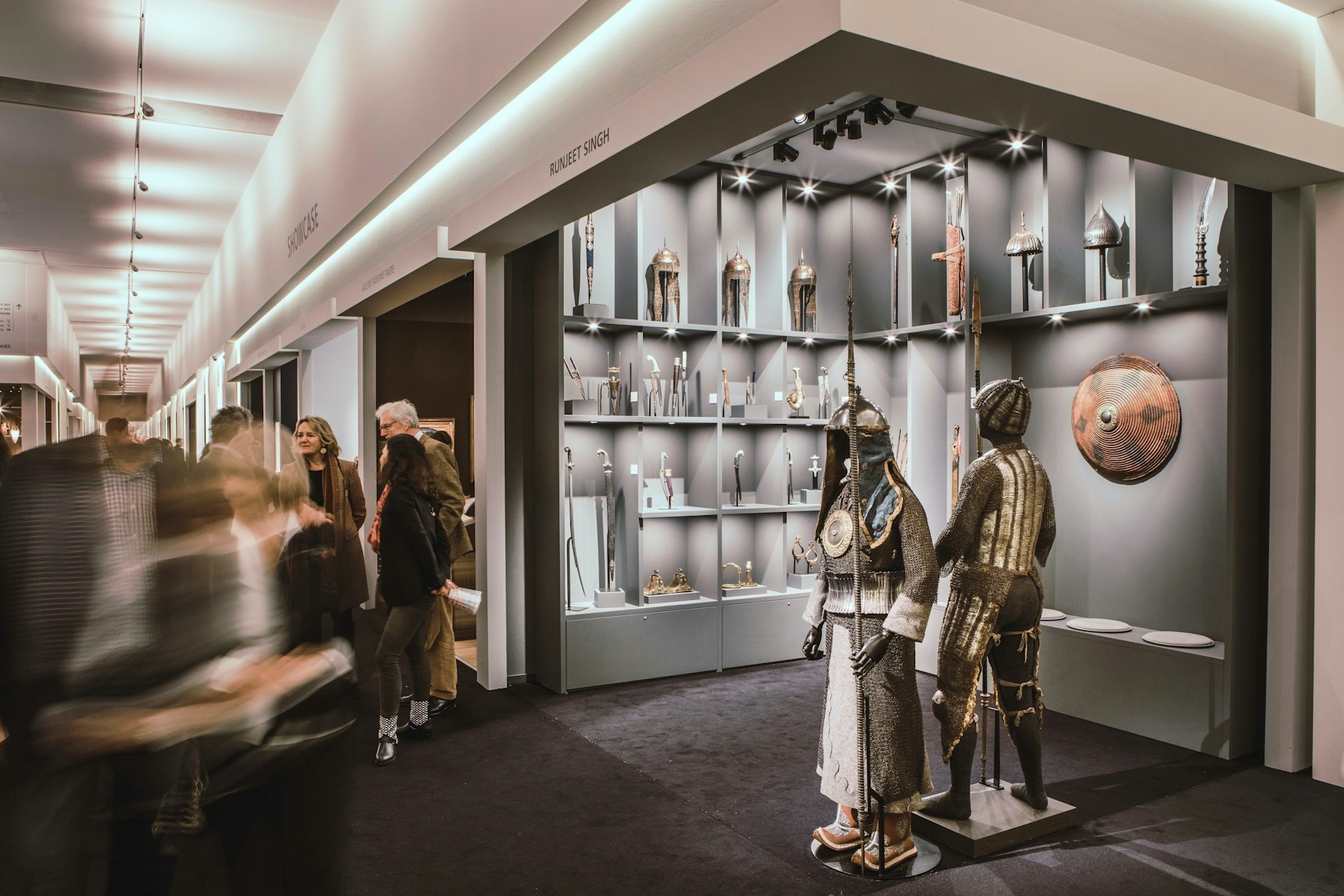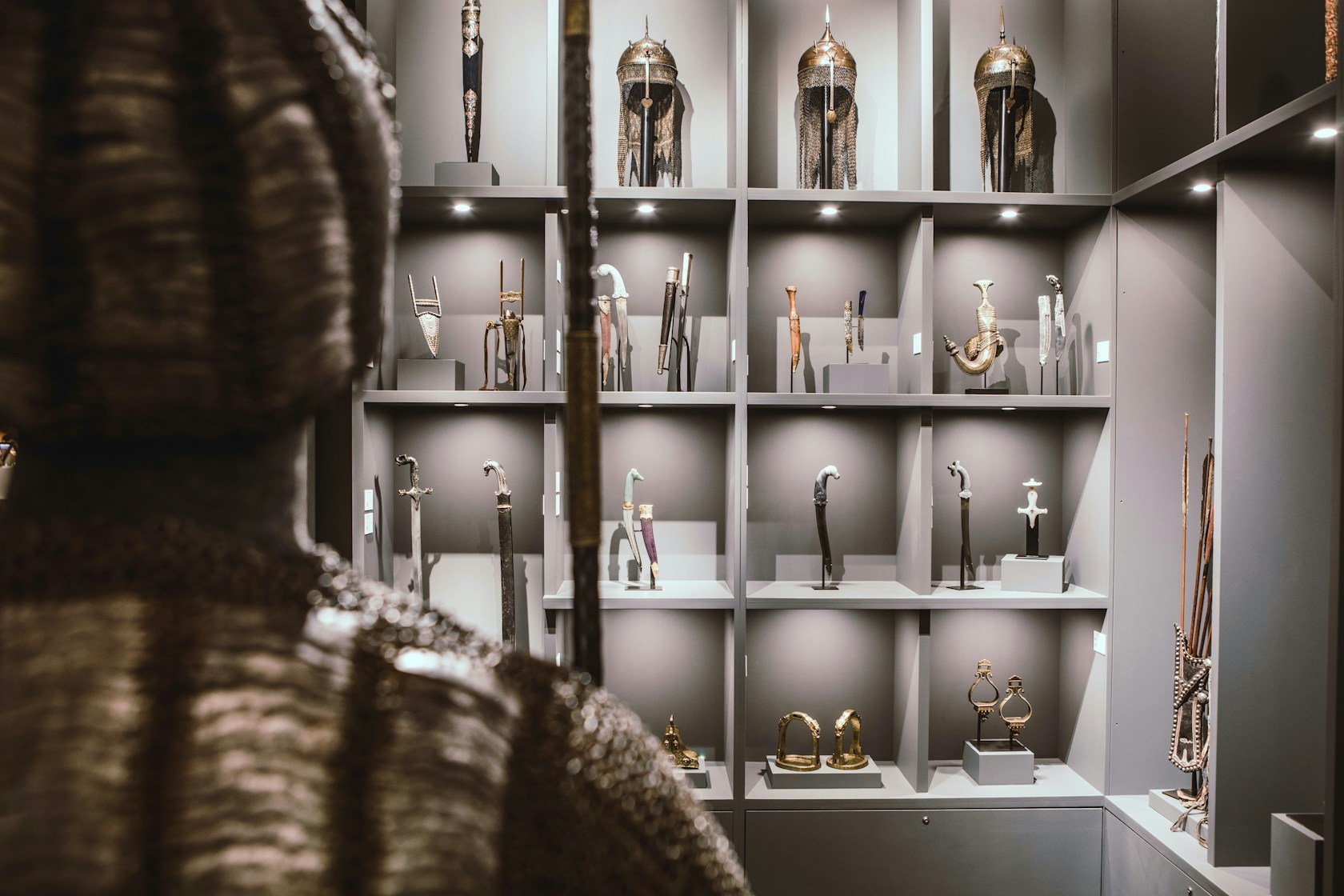
Asian Antiques Dealer Runjeet Singh on His First Time Exhibiting at TEFAF
Singh shares the experience of his first fair and explores his fascination with antique arms and armor
- By TEFAF Editors
- Meet the Experts
Providing a platform for the next generation of dealers is an important part of TEFAF’s ongoing support for the global art community. TEFAF Maastricht supports young and innovative dealers who are recently established through its initiative TEFAF Showcase, which gives eligible galleries the opportunity to participate in TEFAF Maastricht for one year, to gain experience of being part of an international fine art event.
Runjeet Singh, who established himself as a professional dealer of Asian antique arms and armor in 2014, participated in TEFAF Showcase during TEFAF Maastricht 2020. Singh shares how he experienced his first time exhibiting at TEFAF, what led him to pursue a career in the art world, and how he became interested in Asian antique arms and armor.
Why did you apply for TEFAF Showcase last year?
Being located in the UK, I do not find myself short of antique fairs to participate in. However, what I really wanted was to reach an international audience, one that attracted the most important collectors and museum curators, and to place objects that are rare, beautiful, and in fine condition in front of them—perhaps even in their hands. My TEFAF Showcase exhibition allowed me to do just that. I was thrilled with the response and experience, even in a year that was cut short with COVID-19. TEFAF participation and its community has always been a personal milestone, and I was thrilled to have been accepted to take part. I am naturally quite ambitious (never challenge me to a game of ping pong!), and so TEFAF was always my end goal in my dealing career.
How did you prepare for Showcase?
On the day I received news that I was taking part in Showcase I began calling my network of collector and dealer friends; firstly to share the good news, and secondly to ask them if they would part with that special item I knew they had hidden away. One such item was a magnificent 17th-century Mughal dagger, having a carved jade handle in the form of a horse head. It was in the private collection of a friend who had first shown me his collection in 2015. I remember him taking it out of his safe and showing it to me, only to quickly snatch it away and put it back, snapping, “It’s not for sale!” before I could even ask. Well five years later, and endorsed by the TEFAF brand, I felt bold enough to ask again, and the answer was yes, he would sell it. I think it was partly fortunate timing, but also, I know he was thrilled to see it being shown at the best art and antiques fair in the world and given the respect and limelight it deserved. It was published in a catalogue I especially printed for Showcase, and it formed part of a group of items that I gathered, largely in a similar way.

"What I really wanted was to reach an international audience, one that attracted the most important collectors and museum curators, and to place objects that are rare, beautiful and in fine condition in front of them—perhaps even in their hands." — Runjeet Singh
How did you experience your first day as an exhibitor?
I remember having tired feet at the end of the first day and a hoarse throat from talking to new and old friends and clients. However, the first-day sales quickly eased the pain and tiredness! The Showcase exhibitors, who were located in the same part of the MECC, had, during the build-up, become quite friendly, and we supported each other wherever possible. There was a constant stream of colleagues from the main sections who came to wish us well, but also to see what the newcomers were doing. The TEFAF committee members and employees joined the crowds to see if things were running as they should and offer their encouragement. I made a point of befriending the front desk staff: not only were they super friendly, but also a hub of useful information. We enjoyed a meal together during the fair, and we still keep in touch.
What is a memorable moment from your first year at TEFAF?
My birthday happened to fall during the fair, so I celebrated by inviting a group of friends and colleagues to dinner. Usually, I like to be in bed by 10 P.M. with a warm drink and a good book, but Maastricht seems to provide one with extra stamina, and we enjoyed ourselves till (slightly) after midnight and still turned up ‘bushy tailed’ ready for the fair in the morning. The location for the party was wonderful, and embarrassingly the whole room stopped to sing me “Happy Birthday.” The art world really is full of wonderfully open and friendly people, and the people of Maastricht, Maastrichtenaar’s I am told they are called, are very friendly and hospitable.
What made you want to pursue a career in the art world?
I first became interested in arms and armor through martial arts. I started off studying the Philippine martial art Eskrima, before I found and transitioned to the Sikh martial art of Shaster vidiya, which translates as the “Science of Weapons.” My Ustaad (the Indian word for teacher) Nidar Singh taught me not only the physical art, but also the characteristics of weaponry, and the ancient history of martial arts in India. I took an early retirement from martial arts because I found at heart, I was a collector. It started by buying an antique sword to practice with, but quickly led to amassing a small collection. As my knowledge and taste expanded, sadly my bank balance didn’t, so I began selling items to fund new acquisitions, and the rest is history. I don’t have a vast collection anymore, but I have a reasonably large stock at any one time, so I see that as my ever-evolving collection. Many of my clients become good friends, and often I can visit and see objects I have sold, which makes parting with them that much easier. It does make it easier when a dealer does not collect the genre that he or she sells, so there is no competition with their clients. I do sometimes keep Sikh items because of the obvious link, but otherwise, my clients can be reassured that anything exciting I find will be offered to them.
Could you tell us more about the different areas you cover as a dealer and why these specific objects?
Naturally, because of my background, India is my main area of specialty. I am a first-generation British Sikh, after my parents emigrated to the UK from India in 1976. The long and close relationship between Great Britain and India also means a proliferation of Indian arms and armor in the UK. There is also a close link in design and evolution of arms and armor between India and the rest of Asia because of invasion, war, trade, and travel.
I also found a real interest in the Himalayan regions, partly because, by chance, I found quite an important Tibetan object several years ago, which led to more research and a natural hunger to find more such pieces. I suspect the interest in the Himalayas also stems from a longing, as many people have, to go off-grid, even for a short time, and I can think of nowhere more ideal than the Himalayan foothills and perhaps finding a world that modern technology hasn’t quite reached.
What are some of your favorite works in museums that you'd love to see again?
I would love to get back to New York and the Metropolitan Museum of Art. They have a specialist department for arms and armor and an encyclopedic collection. One of my favorite items at the MET is an Ottoman sword known as a Yataghan from the Court of Süleyman the Magnificent (reigned 1520–66) circa 1525–30. The sword is typically Turkish, but its rich gold decoration is a demonstration of the Persian influence on Ottoman art.
The other item I would love to go back and see is a Sikh turban at the V&A Museum in London. While it is not historically unheard of for Sikhs to have worn helmets (with a small bump at the top to accommodate the top knot), the turban was (and is) the headgear of choice. This example resembles that which would have been worn by a Sikh warrior known as an Akali Nihang from the late 18th century onwards. The loose piece of the turban represents the wearer to be high-ranking. The turban is adorned with razor-sharp throwing disks (quoits) known as chakram, and centrally with an ornament known as a gaj-gah, which has a series of crescents and a bagh-nakh (translates as leopard claw) at its base.







